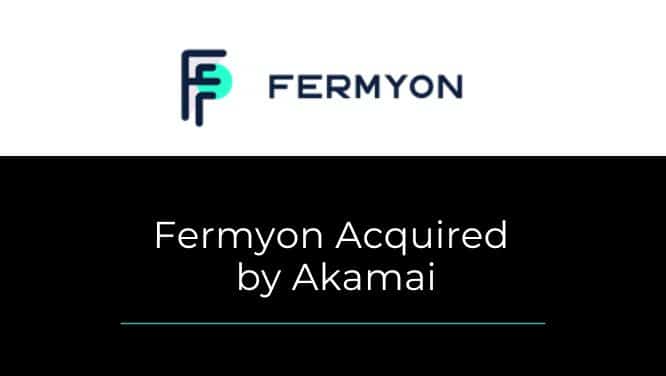5 Tips to Accelerate Enterprise Contracting

- Dan Fredrickson
- |
- April 26, 2023
As companies scale, many will experience growing pains with enterprising contracting. As companies look upstream in terms of deal size and deal sophistication from small, one-off pilots to bigger enterprise-level deals, they typically sign fewer, larger contracts and the contracting process gets harder and takes longer which can have a significant impact on your business.
As the process gets more challenging, more stakeholders get involved and the cycle can take longer which means delays in getting revenue into your business and significant opportunity cost if your salespeople are tied up in contract negotiations instead of selling. At any stage of a company’s life cycle, but particularly at an earlier stage, cash is king so getting more revenue into the business early is important.
The key to closing deals earlier is to reduce the number of contracting cycles and keep them as efficient as possible. For example, if one side’s legal team can turn the contract around in a day but the other side takes four to six weeks to return their feedback, each contract cycle can easily take a month.
Accelerating the contracting cycle can free your sales team up to do more selling and can close deals faster to bring revenue into the business sooner. So how do we tackle these growing pains and accelerate the contracting process? These tips below can help you navigate the contracting process, shorten the cycle, accelerate time to close, and positively impact your company’s bottom line.
- Understand your customer’s perspective.
For growing companies that are new to enterprise contracting, there can be a misconception that they must say yes to all proposed terms and conditions and agreements. It’s important and beneficial in the long run to come to the table as equals and understand the customer’s perspective. Remember that everyone wants to get the deal done but your customer may be subject to strict contracting requirements, so anticipate what their friction points may be and come prepared to help them work within those constraints.
For example, understand that procurement professionals may not be empowered to deviate from set contracting guidelines in the playbook. Because no two deals are the same, anticipate where our deal may be unique for this customer and be willing to acknowledge that it may be a deviation. For legal, their mandate is to mitigate risk so appreciate the position that they are in and be prepared to problem solve on any risk areas. For the business user, their primary objective is to get access to the product or service as quickly as possible. Being prepared to help the key stakeholders work within their constraints can help reduce pushback and save time.
- Engage and educate key stakeholders about the deal specifics early.
Once a deal has made its way through the sales process to contracting, it’s important to remember that we’re still selling to other critical stakeholders like legal and procurement. Taking a moment early in the sales cycle to communicate the big picture context to the legal and procurement teams saves time and money and results in better outcomes in the long run. Outside of the typical details like deal value and size, sales teams should be prepared to explain the strategic value of that particular deal – for example, will this deal set us up for a much larger deal or will this deal block a competitor.
Building mutual understanding of each department’s goals and responsibilities and shifting the perspective to a team mentality reinforces that everyone is working together to get deals done as efficiently as possible.
In most cases, your customer’s legal and procurement teams are probably plugged in late once the deal has made its way through the sales process to contracting. They also probably don’t have much context on what the product is and how the company will use it. Plugging key stakeholders into the sales cycle earlier and educating them about the deal specifics and context can significantly streamline the deal.
Without adequately communicating with those key stakeholders, honest mistakes can create inefficiencies in the process for any number of reasons. For example, procurement may ask the other party to complete the wrong form and a few rounds of markups could take a few weeks resulting in a delay of a few months. Educating key stakeholders early ensures that we don’t lose significant time and revenue on multiple cycles for various forms and iterations.
- Collaboration can streamline the contracting process.
Inviting collaboration with other parties can close deals faster. There are very few binary deal points that can’t be solved with alternative terms or options so it’s valuable to discuss these in more detail and to provide the rationale behind your company or team’s perspective, as well as trying to understand your customer’s motivation.
For example, a common sticking point is termination for convenience. In many cases, a customer insists on a right to terminate for any reason at any time, but product and service providers are unable to agree. While this may appear to give rise to an impasse, the party’s positions are not incompatible. For the product and service providers, their primary concern is that they be paid for the work they contracted for and be able to recognize revenue appropriately. For the customer, the concern may be about being able to terminate vendor relationships that no longer align with the goals of the business. Both parties can achieve what they need in this example with an early termination fee, a protracted termination notice period, or by frontloading payments under the contract. By asking deeper questions and explaining your respective positions, parties can find common ground and move past difficult terms.
Taking the time to discuss both companies’ viewpoints and objectives can pay off in the long run with better outcomes and a more efficient contracting cycle.
- Tackle tough issues early.
In addition to engaging key stakeholders like legal and procurement early, knowing your walk-away items early is extremely valuable. If something is truly a non-starter for your business, raising it early helps to ensure there are no surprises as contracting goes on and serves as an opportunity to communicate your needs to your customer.
If there’s a deal term that’s a pressure point, it’s a lot more meaningful if we can explain why. While holding your cards close to the vest or bluffing may seem like you’re protecting your company’s position, this can actually eliminate trust and harm the deal making process.
Additionally, try to find out what your customer’s showstoppers are early to anticipate their needs and come prepared with proposed solutions to help cut down on the number of contracting cycles.
If you’re approaching an impasse on a particular point that has the potential block the deal, find the decision maker who can remove the blocker and influence the key players to move forward.
- Lean on your salespeople through the contracting process.
There is often a misconception that lawyers own the contract and sales is only responsible for an underlying statement of work or purchase agreement. In fact, the strongest sales teams understand their contract inside and out, perceive deal friction well in advance, and are able to speak to the terms that are most important for a particular deal or company and driven by business need.
Sales teams should be empowered to educate key stakeholders as well as to raise and backchannel key sticking points early and provide context about why the company may need to take certain positions. If there are particular hot button issues or instances where the company doesn’t have a lot of flexibility, it’s valuable and most efficient for sales to preview those points with counterparties to tackle those issues early and defuse potentially difficult situations.
Starting these discussions and negotiating certain points with potential customers before bringing the legal team into the conversation is more meaningful and efficient than a lawyer explaining the legal position.
Remember, at the end of the day, everyone involved wants to close the deal. Legal and procurement don’t want to be bottlenecks and all parties want to ensure deals are advancing as quickly as possible to get them closed in a meaningful way.
Following these tips can help streamline the contracting process, accelerate time to close, shorten the sales cycle, and positively impact your bottom line more efficiently.
Dan Fredrickson is a partner at KO Law Firm. Dan assists companies in connection with complex commercial and technology transactions. His clients range from early-stage startups and emerging companies to private and public multinational corporations across many industries, including software, energy, life sciences, hardware, internet and eCommerce, consumer products, and professional services.




